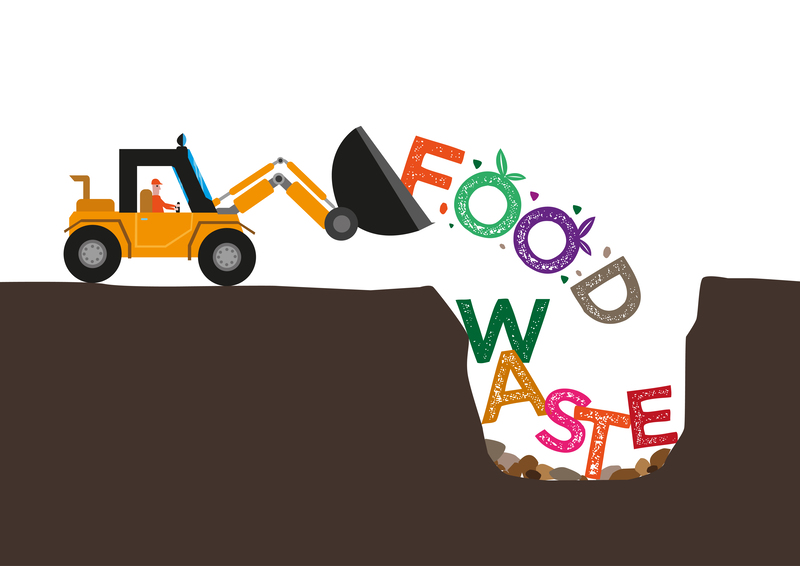Sustainable Product Design
Posted on 12/02/2025
In recent years, sustainable product design has emerged as a vital consideration for businesses, consumers, and governments worldwide. The escalating concerns over environmental degradation, resource depletion, and climate change have catalyzed a paradigm shift towards sustainability. This comprehensive article delves into the principles, benefits, challenges, and future prospects of sustainable product design, offering a well-rounded understanding of this crucial field.
Principles of Sustainable Product Design
Sustainable product design primarily focuses on minimizing negative environmental impacts while promoting economic and social well-being. Here are some fundamental principles that guide this approach:
- Design for Longevity: Products should be durable, repairable, and upgradeable to extend their lifespan and reduce waste.
- Resource Efficiency: Use fewer resources and prioritize renewable, recycled, and low-impact materials.
- Energy Efficiency: Focus on reducing energy consumption during production, usage, and disposal phases.
- End-of-Life Consideration: Plan for product recyclability, biodegradability, or safe disposal to minimize environmental harm.
- Social Responsibility: Fair labor practices and ethical sourcing are integral to sustainable design.

Benefits of Sustainable Product Design
Embracing sustainable product design brings numerous advantages that transcend environmental considerations. Here are some noteworthy benefits:
- Environmental Conservation: Sustainable design helps reduce pollution, conserves natural resources, and mitigates climate change.
- Cost Savings: Efficient use of materials and energy can result in lower production costs and operational savings.
- Brand Reputation: Companies adopting sustainable practices tend to attract environmentally-conscious consumers, enhancing brand loyalty.
- Regulatory Compliance: Regulatory bodies increasingly mandate sustainable practices, and compliance can avoid penalties and legal issues.
- Innovation and Market Differentiation: Sustainability can spur innovation and provide a competitive edge in the market.
Challenges in Sustainable Product Design
Despite its advantages, sustainable product design is not without challenges. Organizations often encounter the following obstacles:
- High Initial Costs: Investing in sustainable materials, technologies, and processes can entail significant upfront costs.
- Consumer Perception: Some consumers may perceive sustainable products as expensive or of lower quality, affecting market acceptance.
- Complex Supply Chains: Ensuring sustainability throughout complex, global supply chains can be demanding.
- Technological Limitations: Current technology may not always support the most sustainable solutions.
- Knowledge and Expertise: Developing expertise in sustainable design can require education, training, and a cultural shift within the organization.
Case Studies of Sustainable Product Design
Examining real-world applications can provide valuable insights into sustainable product design. Let's explore two notable case studies:
Patagonia's Eco-Conscious Approach
Outdoor clothing company Patagonia is renowned for its commitment to sustainability. The company emphasizes the use of recycled materials, fair labor practices, and long-lasting products. Patagonia's Worn Wear program encourages consumers to repair and reuse items, reducing waste and fostering a culture of sustainability.
Tesla's Electric Vehicles
Tesla has revolutionized the automotive industry by designing electric vehicles that aim to reduce greenhouse gas emissions. By focusing on energy efficiency, renewable energy integration, and a robust supply chain, Tesla exemplifies how innovative design can drive sustainable transportation solutions.

The Future of Sustainable Product Design
The future of sustainable product design is promising, driven by technological advancements, evolving consumer preferences, and regulatory changes. Here are some trends shaping the future landscape:
- Circular Economy Models: Focus on creating closed-loop systems where products are designed for reuse, refurbishment, and recycling.
- Biomimicry: Emulating natural processes and systems to create more efficient and sustainable designs.
- Smart Materials: Development of materials that can self-heal, adapt, or degrade harmlessly when no longer needed.
- Digitalization: Leveraging digital technologies such as AI, IoT, and blockchain for better resource management and transparency.
Conclusion
Sustainable product design is no longer a mere option but a necessity in our quest to preserve the planet for future generations. While it presents challenges, the benefits it offers in terms of environmental conservation, cost savings, and market differentiation are compelling. As businesses, consumers, and governments increasingly prioritize sustainability, the principles of sustainable product design will continue to shape the future, fostering innovation and steering the world towards a more sustainable, equitable, and resilient future.
Whether through embracing longevity, enhancing resource efficiency, or adopting circular economy practices, the journey towards sustainable product design begins with informed choices and a shared commitment to a better world. The future beckons us to rethink our approaches, innovate responsibly, and champion products that harmonize with our environment and society.




 020 3743 9508
020 3743 9508


